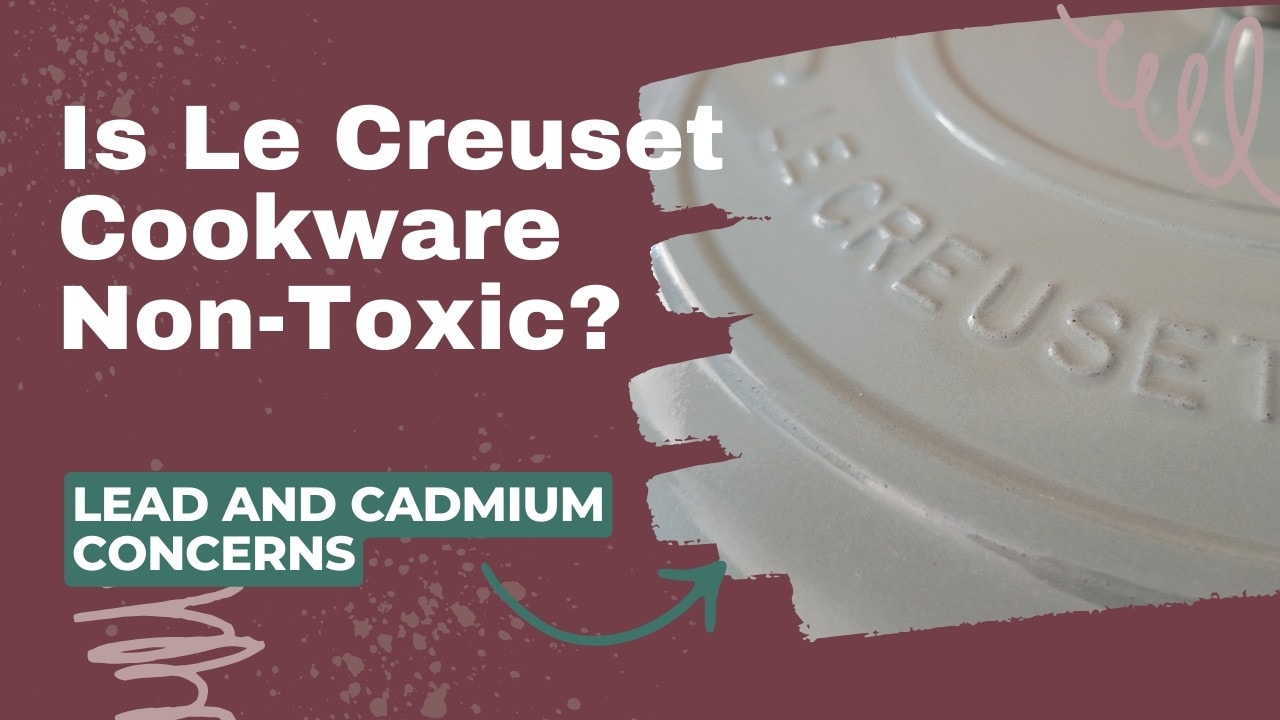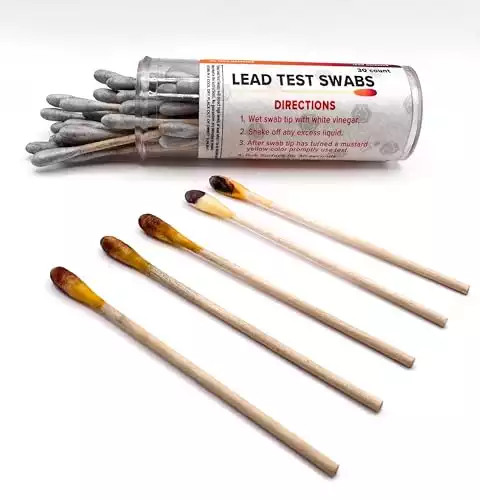DISCLAIMER: THIS PAGE DOES NOT PROVIDE MEDICAL ADVICE.
This page is intended for informational purposes only. No material on this page is intended to be a substitute for professional medical advice, diagnosis, or treatment. Always seek the advice of your physician or other qualified healthcare provider before changing your dietary or cooking habits.
Known for its French craftsmanship and rigid quality testing, Le Creuset has been a household name for 99 years and counting. Historically, the heavy metals lead and cadmium were used in ceramic coatings to produce bright colors and glossy finishes. But is this still the case? Are Le Creuset products safe to use, or are they contaminated with heavy metals? Can those metals – which are known neurotoxins – transfer to your food if you cook in an enameled Dutch oven?
These are not easy questions to ask. And they are not easy questions to answer. You’ll find a lot of confusing information about Le Creuset products, and conflicting interpretations of information. Believe me, I’ve read it all, many times.
I’m not going to tell you to use or not use any particular kind of cookware. But I’ll share everything I’ve uncovered about the safety of Le Creuset products after months of research, so you can make the best decision for yourself and your family.
Is Le Creuset Safe?
Le Creuset cookware is likely very safe to use. It’s among the top brands of cast iron cookware recommended by medical experts, like those at Healthline.
Le Creuset’s signature enameled cast iron dishes are made without synthetic resins like PTFE. However, the brand does not reveal the exact components of the porcelain glass coating on its cookware, so it is hard to know whether they are perfectly safe or not.
About Le Creuset
Le Creuset is one of the most famous cookware brands, making a wide range of products, including cookware, bakeware, utensils, and cutlery. It’s most famous for its enameled cast iron Dutch ovens, with which the company was born in 1925. When most people say, “Is Le Creuset safe?” they’re usually asking about either its enameled cast iron or its enameled stoneware products.
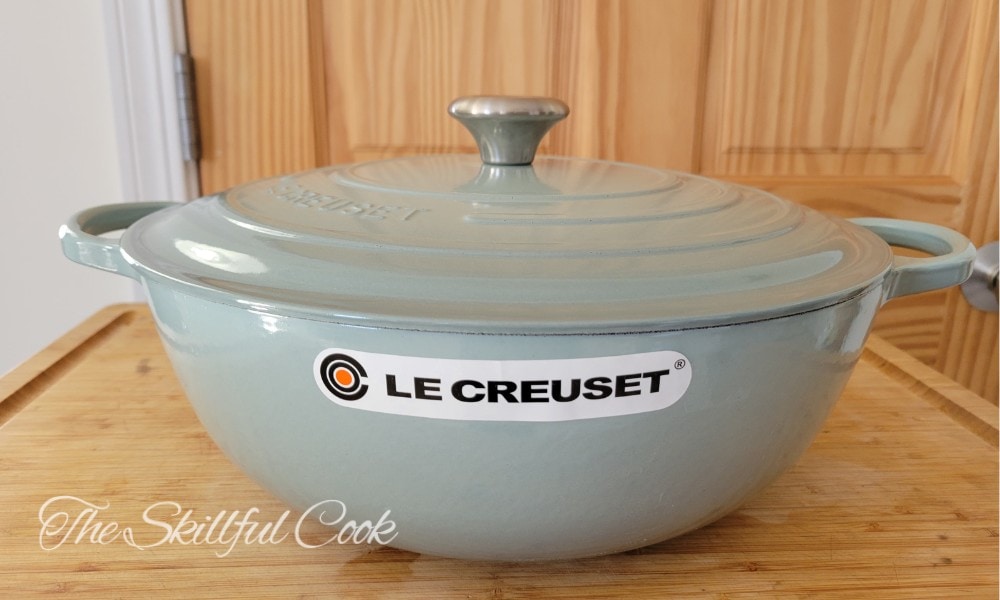
Although its headquarters is in France, Le Creuset has locations in many other countries, including China. But, according to the company, all their products go through the same quality control processes.
Every piece of Le Creuset enameled cast iron cookware is hand-made, with about 30 pairs of eyes inspecting it before it leaves the factory.
Is Le Creuset Cookware Non-Toxic?
Le Creuset is a reputable company compliant with American standards set by the FDA. Le Creuset claims that its products are tested to comply with California Proposition 65, which sets limits on the amount of heavy metals in cookware and other products.
Le Creuset does not claim that its products are made without any lead or cadmium at all. Although I was not able to find a reputable source for the quote, some have stated that Le Creuset has confirmed that they use cadmium to produce their red, orange (flame), and yellow enamel colors. But when they use cadmium, they cover it with an anti-acid enamel fritt to prevent leaching.
According to a letter from the FDA, any amount of leachable lead in cookware is a serious concern. But I believe that if any enameled cookware is likely to be safe and non-toxic, Le Creuset is your second-best bet. (Staub may be the best, as per our tests.)
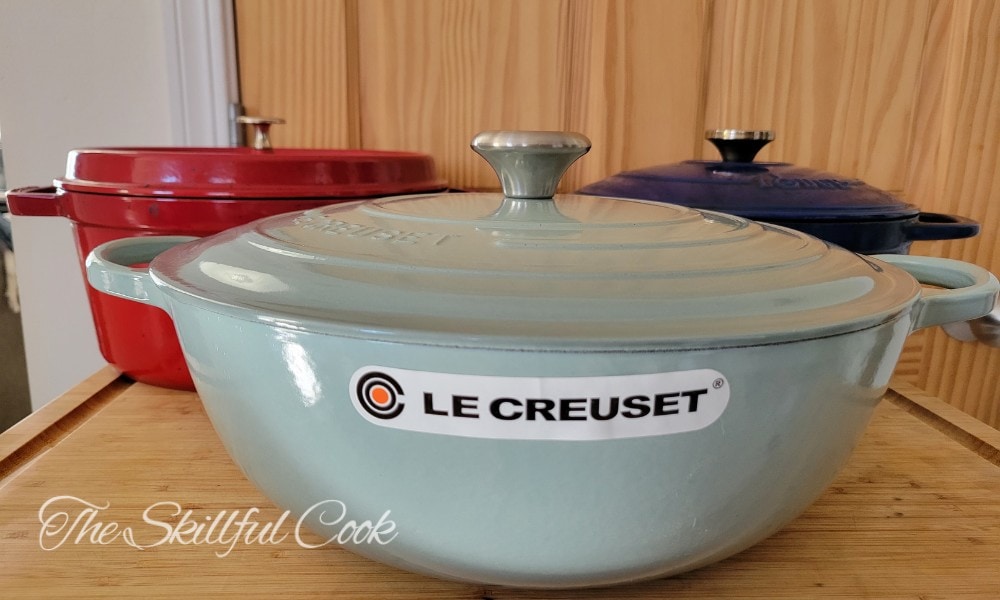
I have a lot more confidence using Le Creuset and Staub products made in France with strict quality control procedures than dupes made in an overseas factory and branded for resale in the US – even though they cost much less.
What Chemicals are in Le Creuset?
Le Creuset enameled cast iron is made of a mix of raw and recycled iron, possibly alloyed with small amounts of other metals, and covered in glazed enamel. The enamel is made of powdered glass and clay that’s melted and fused to the iron using extreme heat. Le Creuset does not disclose the exact ingredients of their metal alloy or their enamel coating.
When we talk about chemicals, we should differentiate between harmful and safe chemicals. All cookware is made with chemicals – but what we’re usually asking is whether it has chemicals that are considered harmful – like PFAS.
Does Le Creuset Contain PFAS?
Le Creuset enameled cast iron and stoneware products do not contain PTFE (Teflon) or PFAS (per- and polyfluoroalkyl substances). But the Le Creuset branded nonstick pans do contain chemicals in the PFAS family, including PTFE.
Does Le Creuset Enameled Cast Iron Contain Lead?
Prior to regulations set in 1971, lead was used in many types of glazed cookware. It gives pots and pans a glossy look and enhances bright colors. You may want to completely avoid Le Creuset products made before 1971, or have your vintage products lab-tested.
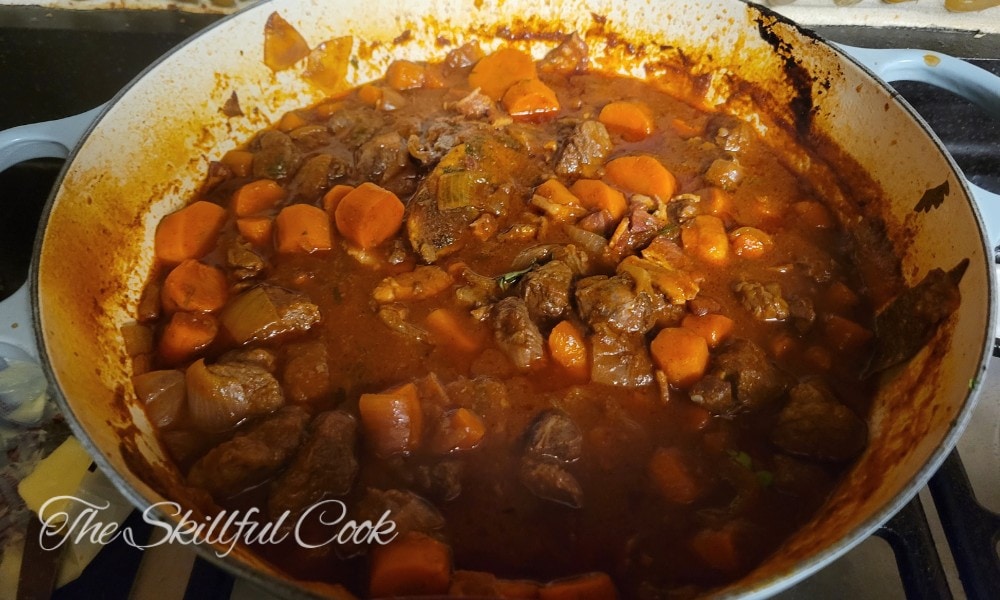
The use of heavy metals in cookware production has been greatly reduced. But it is still possible that modern Le Creuset enameled cast iron products contain small amounts of lead and cadmium.
California Proposition 65 mandates that cookware manufacturers report the level of toxic chemicals in their products and label them accordingly. Only products with zero lead can be labeled “Lead-free.”
“Lead-free” vs “Lead Safe”
Most Le Creuset products are not labeled lead-free, but they do meet Prop 65 requirements for leachable lead.
The concept at play here is that the presence of lead in a pot doesn’t mean that it will transfer to food cooked in it. Products that may contain lead but shouldn’t transfer lead to your food will be labeled “lead safe.”
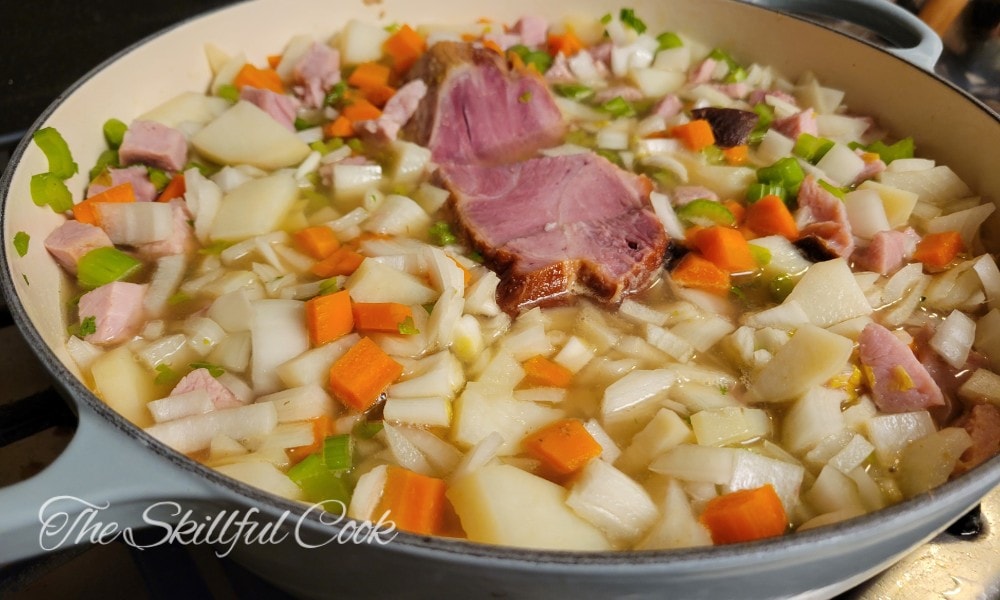
It’s also important to remember that California Proposition 65 does not prevent the sale of pots and pans that exceed safe lead thresholds; it merely requires them to be labeled.
Testing Le Creuset for Heavy Metals Lead and Cadmium
A couple of individuals have home-tested their Le Creuset products and found very small amounts of heavy metals in either the product bodies through X-ray testing, or in food cooked in those pots. However, there are, to my knowledge, just two individuals who have published their at-home tests of Le Creuset products, although those two are widely cited.
A blogger who goes by Natural Baby Mama cooked tomato sauce in two Le Creuset enameled cast iron Dutch ovens. She shipped samples of the tomato sauce to a lab that found very small amounts of aluminum, lead, and cadmium in the samples. She also performed XRF testing and found no traces of lead in the cookware, so it was inconclusive whether the metals came from the cookware itself.
When considering the test results, we should keep these in mind:
In other words, more testing is necessary. If you would like to try testing your own piece of cookware, you can use a home kit. You can also send samples of your food cooked in enameled cast iron or the cookware itself to a local lab to test for lead and other toxin levels.
Building on these findings, we decided to conduct our own lead test on Le Creuset cookware. Read the results and methodology here.
Which Le Creuset Colors are Safest?
As mentioned, lead and cadmium are present in some colored enamel cookware. Lead gives the yellow color a vibrant hue, and cadmium creates the red tones. Third-party XRF tests show that older Le Creuset products contain lead and cadmium, mostly in the exterior enamel in yellow and red pots. Tests on newer products typically reveal lower levels of heavy metals, but they may not be lead-free.
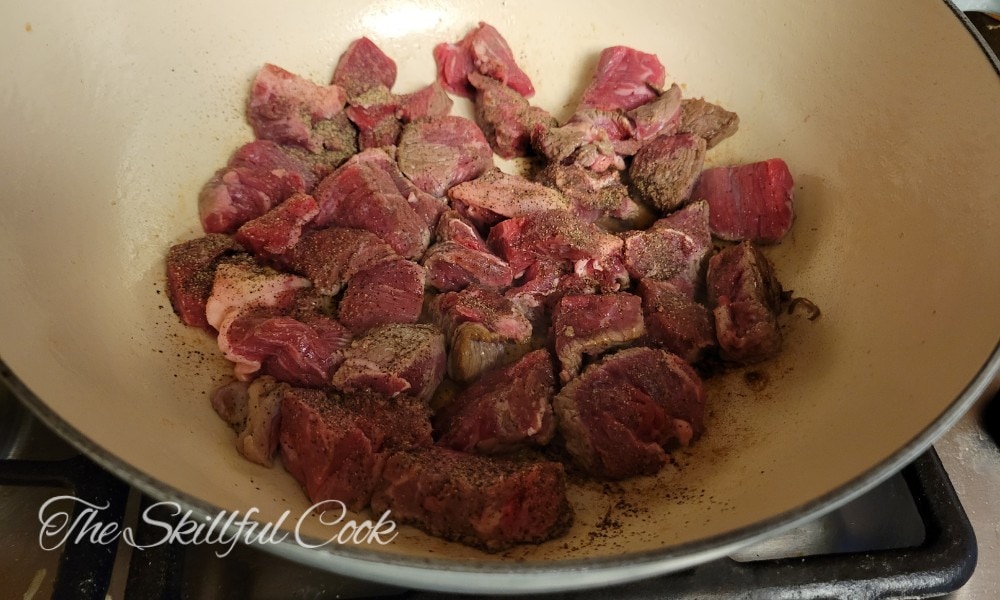
Le Creuset has not confirmed that any of their enamel colors currently in production are made without lead or cadmium at all – but you are likely better off choosing blue or purple tones than yellow or red.
Is a Le Creuset Dutch Oven Safe if the Enamel Chips?
Although Le Creuset’s enamel coating is incredibly strong, it’s not 100% resistant to chips and cracks. The coating can flake off if you use metal utensils or drop the cookware on a hard surface.
The enamel chips could be sharp and cause injury if they wind up in your food. And, since Le Creuset doesn’t reveal exactly what’s in their coating, you may want to avoid ingesting enamel flakes.
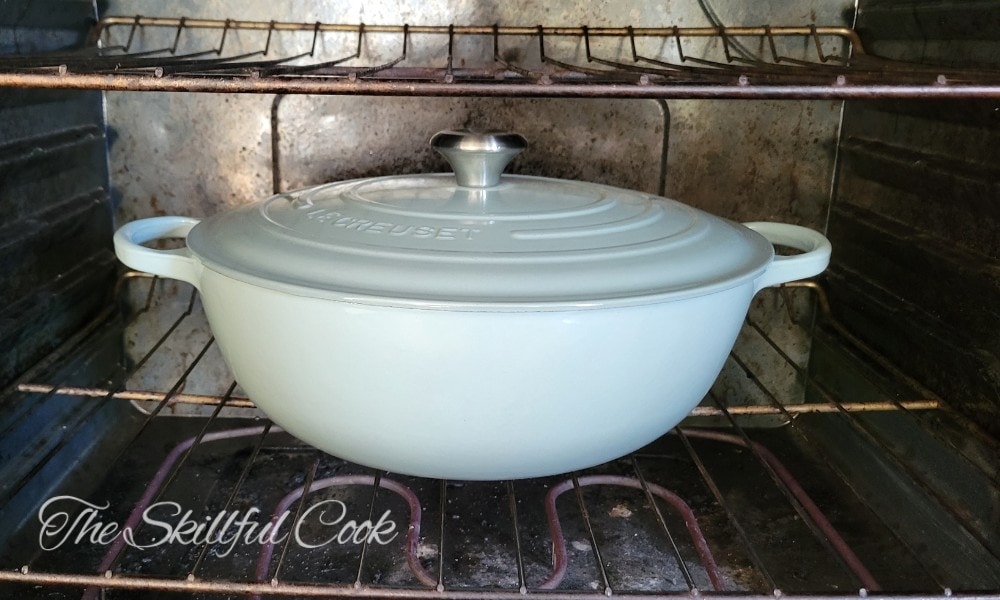
Once a pot begins to chip, the problem just gets worse, so we suggest replacing a chipped item. (Thankfully Le Creuset has a great warranty!)
When bits of enamel chip off the cookware, the underlying cast iron is exposed. The bare cast iron vessel can rust and it will transfer iron to your food.
What About Other Le Creuset Products?
Although Le Creuset is mostly known for its enamel cast iron, it sells quite a few different cookware materials under its brand.
Is the Le Creuset Company Environmentally Conscious?
Le Creuset as a brand has made significant efforts to reduce its carbon footprint and promote ethical manufacturing. They make durable enameled cast iron cookware that can last a lifetime. They also use renewable energy in the form of solar panels to reduce their carbon footprints.
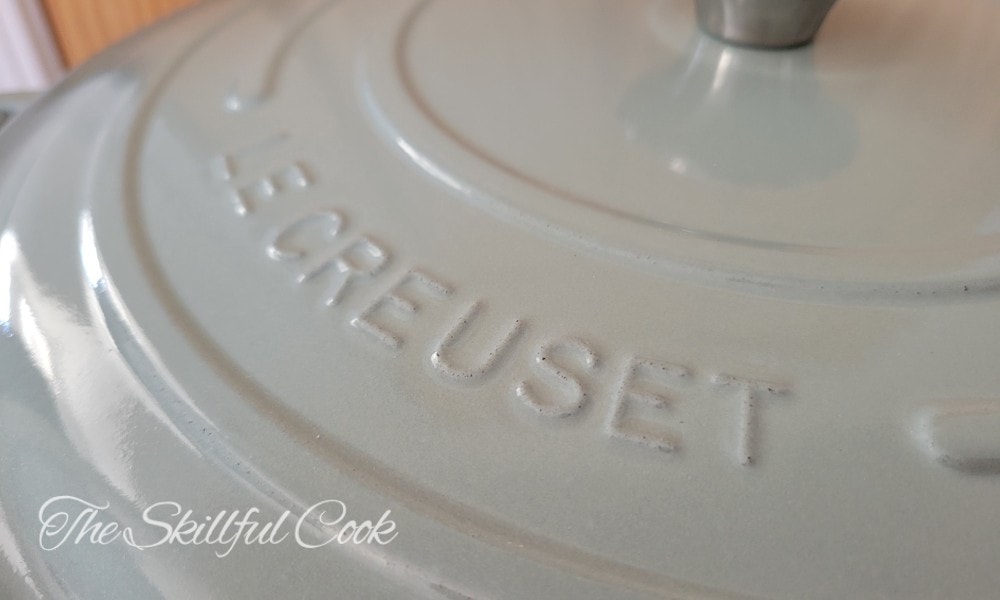
Le Creuset uses a significant amount of recycled steel from the auto industry in their cookware. They also commit to equality and the gender pay gap to promote ethical manufacturing.
What about Staub and Lodge – Are They Non-Toxic?
Generally speaking, cookware sold in the US has to comply with FDA requirements and California Proposition 65 regulations. These regulations are not as strict as they could be – paint and colored enamel on cookware technically doesn’t need to be “lead-free” according to FDA regulations, because it’s not “intended for use by children.”
Staub enameled products have a better track record of testing negative in at-home consumer tests for lead and cadmium than Le Creuset does. According to Staub, its products are made in France, lead-free, cadmium-free, and compliant with California Proposition 65.
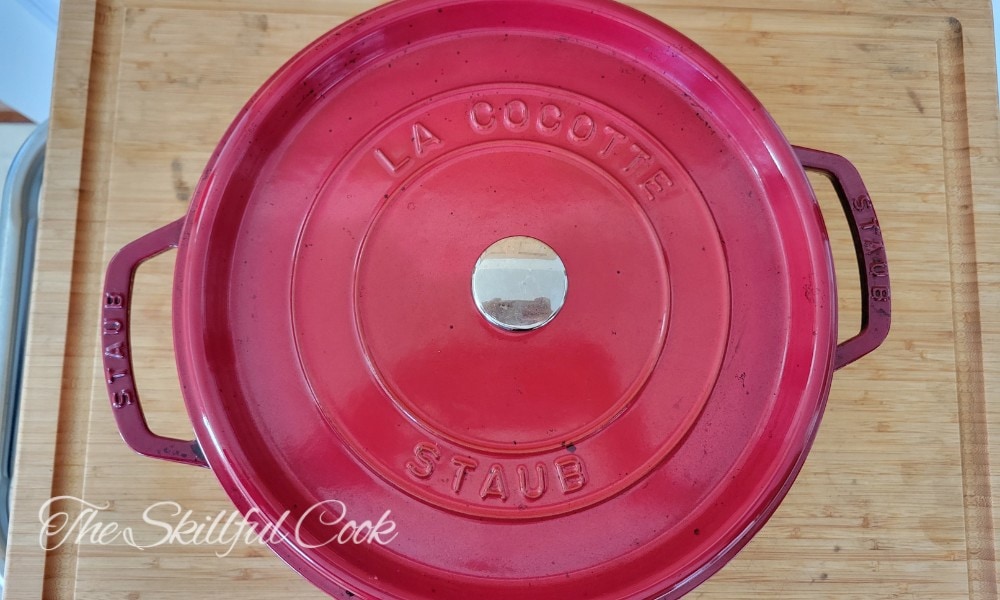
Lodge has two different lines of enameled cast iron cookware. One is made in the US and is more expensive, and the other is very affordable but made in China.
Lodge has stated that their cookware, whether made domestically or imported, complies with FDA standards and California Prop 65.
“Lodge utilizes the U.S. Food and Drug Administration Test Procedure 7.5.1.4a Leachability of Lead and Cadmium for Glazed Ceramic Surfaces. Lodge Manufacturing Company uses third-party testing to ensure that products with the Lodge name comply with standards set forth by the United States Food & Drug Administration.”
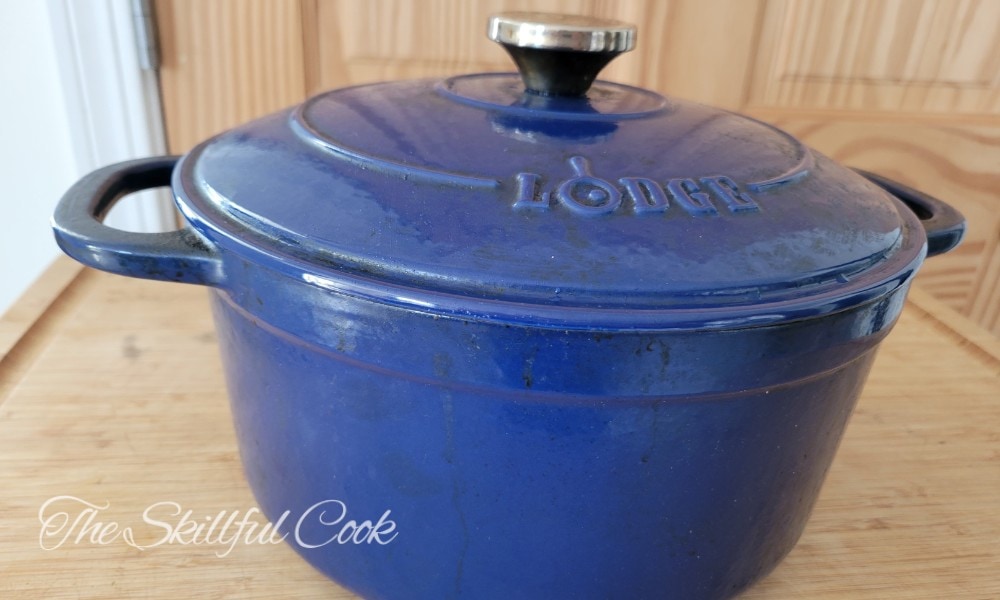
Conclusion
If you are looking for a non-toxic Dutch oven, Staub would be my first choice. But, depending on the age of the cookware and the color, Le Creuset is among the best options as well.
This is not an easy topic to talk about. We all want to use our beautiful or favorite pots and pans that spark joy.
But a realistic look at our planet reveals that there are potentially harmful substances in everything – in our clothes, our air, our food, and the pots we cook it in. Every kind of cookware material has its own risks. Discuss your personal risks with your doctor to determine the best kind of pots and pans for your family.
We’re open to continuing this discussion! If you have any questions or discover any helpful studies, please let us know about them!
We’re open to continuing this discussion! If you have any questions or discover any helpful studies, please let us know about them!

